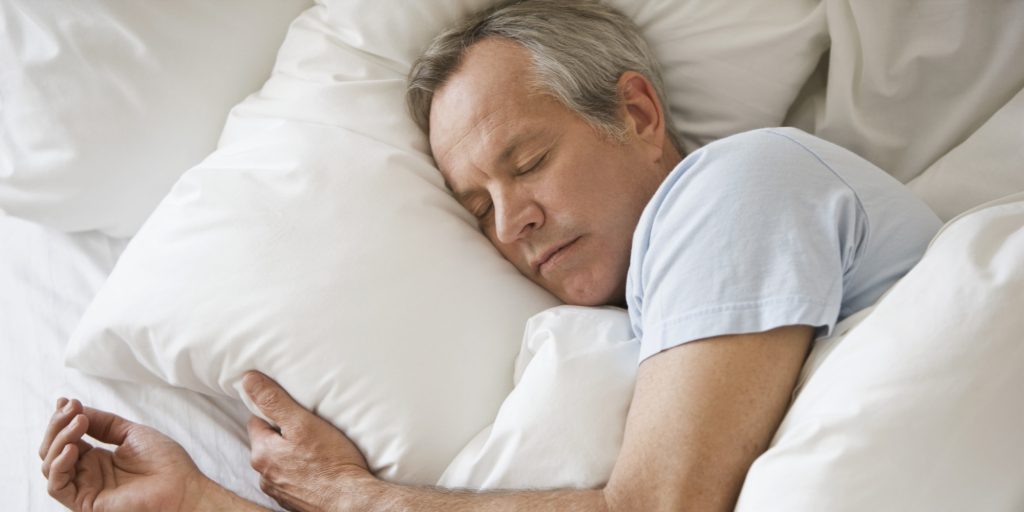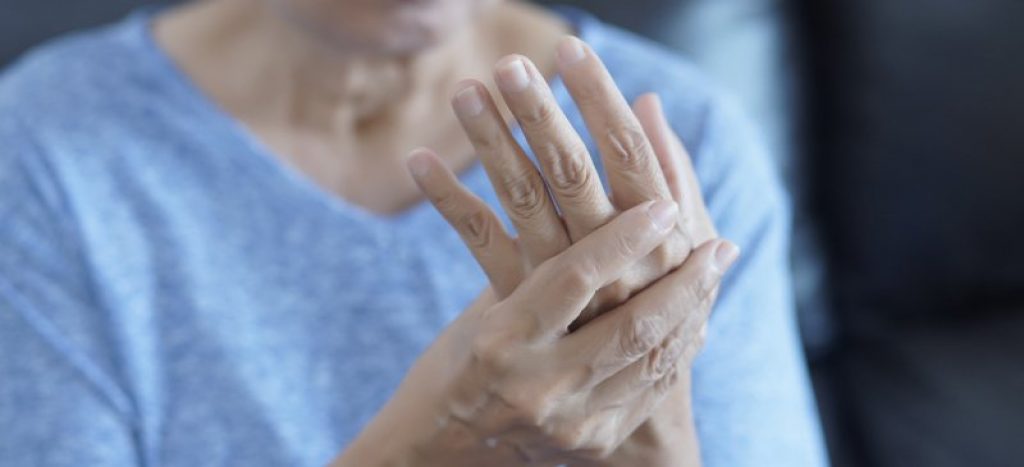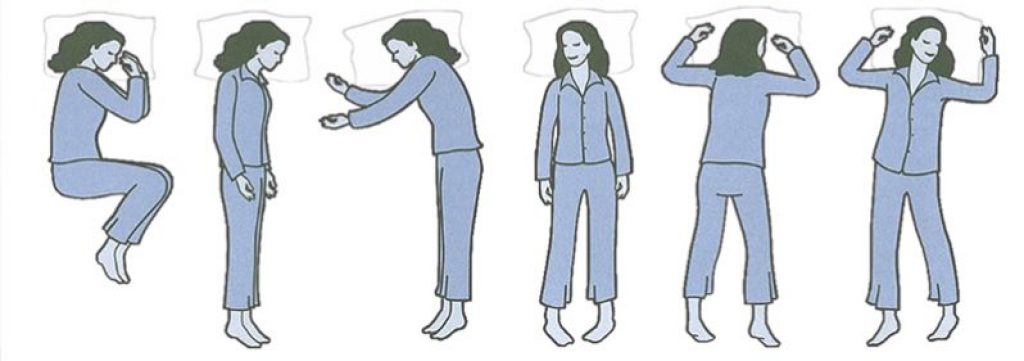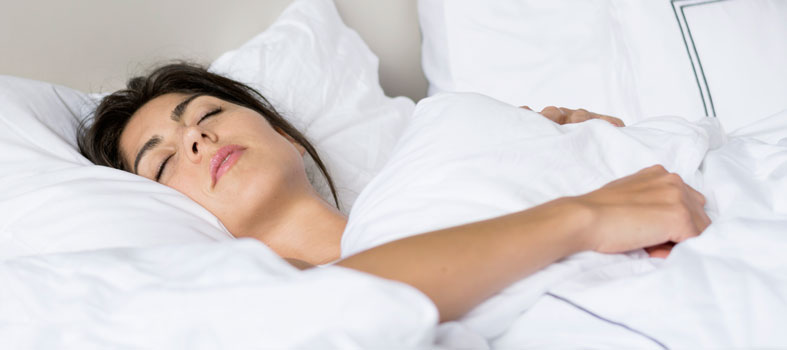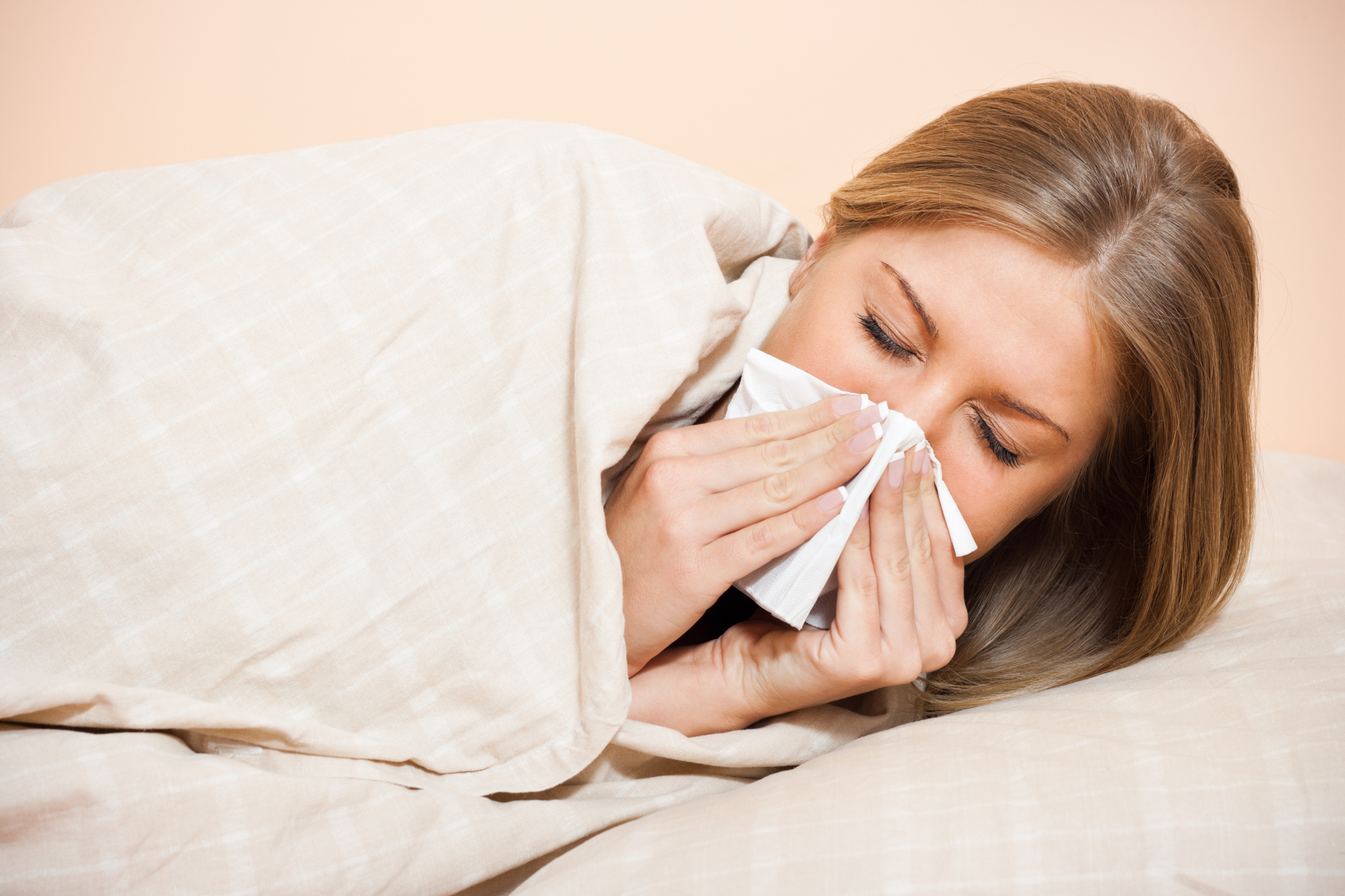
While we tend to associate arthritis with old age, the condition is widely spread in people of all ages, race, and sexes. Furthermore, arthritis is only a general term used to describe joint pain and diseases that make natural movement of any kind feel like a torment.
According to recent data, arthritis is the most common debilitating disease in America, with over 50 million adults and over 300,000 children being affected in one way or another. It’s also important to understand there are over 100 types of arthritis, and it’s most common among women but it also affects men.
The good news is that arthritis is a condition that develops in time (in most cases), and there are things you can do to prevent it or, at least, lessen its effects. The secret is to keep your joints healthy and mobile for as long as possible through a healthy diet, movement, and a good life. This also includes a healthy sleeping pattern and a mattress to support your joints while in slumber.
Sadly, no one has developed a mattress designed to alleviate or even prevent arthritis problems, but there are many surfaces that promote a healthy sleeping position. Luckily, we had the chance of reviewing some of the most interesting mattresses that are best for arthritis and below you can read all about them.
Our Highest Rated Arthritis Mattress Reviews
Nectar – Top-Rated for Joint Pain
Features:
- A mattress made only with foam
- Very easy to maintain and install
- Gentle on the joints
- Great back support
Our Ratings: 9.8/10
For those of you who are looking for a cloud-like mattresses, but bouncy enough to keep your spine in alignment, Nectar is a wonderful choice! Not to mention, it’s affordable for almost anyone and comes wrapped neatly in a box!
The bed is impressive and elegant, and we loved that the cover is easy to remove and clean. This makes it a bed for the entire family (small or big)!
When it comes to your joints, this mattress is recommended because it accommodates any type of sleeping positions (from side sleepers to back, to the stomach bunch). So, regardless of your habits on the mattress, the spine will be in great alignment, and the knees, shoulders, and neck will not be in any tension. The result is a happier you in the morning, well-rested and ready to start a new day. This happens because the tension you gather during the day is released, and your joints work perfectly once again!
Puffy – Popular Choice
Features:
- Divinely comfortable sleep
- Doesn’t sleep hot
- It is nice, cold, and supportive
Our Ratings: 9.5/10
If some mattress producers seem to think that only a bunch of layers will satisfy their customers, Puffy features a minimalistic design, with only two layers. One is their proprietary foam called the Cooling Cloud – because it is as soft and fluffy as a cloud, but also cool.
The foam is infused with a special gel that wicks heat and humidity away, while also providing the sleeper with support and comfort. Given these features, the bed is also great for people suffering from joint pain and any other arthritis symptoms.
At the base, Puffy is supported by the highest-quality polyurethane foam, designed to keep the sleepers happy and the surface bouncy and supportive.
Learn much more about this model by reading our Puffy overview here.
Purple – Superb for Chronic Pain
Features:
- Considered the best no-pressure mattress
- Customizable support, exactly as you need it
- Mattress fits everyone’s needs
Our Ratings: 9.4/10
The people behind Purple mattresses used years of data with reference to sleep comfort from real users and created a unique surface that reacts exactly as you need it. Even more, unlike memory foam, this bed is fast in reactions and doesn’t overheat.
The secret that made Purple so popular stands in a grid-like layer of gel that’s both elastic and soft. The grid structure allows it to react to pressure exactly where it’s needed so the contouring is almost scary good. As you can imagine, every type of sleeper should feel amazing on this bed, and the no-pressure feature makes it fantastic for people with painful joints.
The gel layer sits on top of two other layers, made of sturdy foam, serving as a base that provides a great pushback effect to the material on top. Overall, the Purple is cooling, contouring, and supporting, which is why we chose is as one of the top-rated products on the market.
If you want to give this a try, maybe you should first go to our Purple analysis.
Arthritic Pain Relief (Mattress Buyer’s Guide)
Reduce Pressure Points
The most common symptoms of arthritis include swollen joints, pain, stiffness and decreased range of motion. Considering these effects, you can only imagine what some hard-felt pressure points would do to a person suffering from this unforgiving disease!
So, to reduce the pain and make sure it doesn’t bother your sleep or your life, it’s highly recommended to select a mattress that provides good pressure relief. In translation, the surface must be contouring and supporting enough to create a buffer zone between the sleeper’s body and the hard parts of the mattress. This zone should be elastic, soft, and should provide customizable support (where you need it).
If these criteria are not met, the heavier areas of the body (usually hips and shoulders) will suffer from uncomfortable pressure during the night, and this only means more pain for you in the morning.
If you have a back discomfort you should check our excellent options for lower back pain sufferers.
Body Support
Another factor that matters when selecting a good bed (especially when you suffer from arthritis) is body support. This means that your body will be supported by the mattress, which won’t let the hips or shoulders dip more than they should.
This type of support can be found in most modern surfaces nowadays, but if you also want a bit of bounce, you should consider getting a latex or an innerspring design. Memory foam ones are slower in reaction and have very little bounce.
The main idea, when it comes to this feature, is to make sure you choose the right firmness setting. If the mattress is too soft, then some parts of your body will go deeper than others, keeping the spine and joints in tension. On the other hand, if it’s too hard, your joints will have to deal with pressure points.
Ease of Switching Sleeping Posture
Let’s do a quick imagination exercise: imagine your wrists, elbows, and shoulders hurt with every move you make. Now, think about your hips – you feel them stiff and your range of motion is half what it used to be.
With all this in mind, try imagining how easy it would be to turn from one side to the other, on a memory foam mattress! Because this type of material doesn’t have too much bounce in it, it can be a sand trap for people with joint problems. On the other hand, it is soft and contouring, which makes it one of the best designs for pressure relief.
However, the idea is that you need a bed that will respond in a split second to your move, and will even give it a boost (like an innerspring would). These are usually materials with a bit of bounce like latex or even gels used as infusions in memory foam and polyurethane foam.
Overview of Different Types of Arthritic Problems
Osteoarthritis
In most cases, the type of arthritis is called osteoarthritis and is a condition where the cartilage is worn off. If you don’t know, the cartilage is what makes joints so flexible and keeps them running smoothly; if this goes away, the bones will rub against each other, strangling nerves and creating lots of pain.
The cartilage also has the role to lubricate the area, as it is a soft, slick tissue that allows the big bones to slip into place.
As you can imagine, if this tissue disappears, the movement in that joint will be stiffer and the main symptom is a swelling and inflammation of the area. It’s like trying to operate a robotic arm without the proper lubrication in between parts.
If the situation gets worse, the pain can become chronic and the movement restriction can be permanent. However, if it is attended to from the first signs, osteoarthritis can be managed through physical activity, a healthy diet, muscle strengthening exercises, OTC pain relievers, and more.
Rheumatoid
Also known as inflammatory arthritis, this condition is caused by a faulty immune system that treats the joints as the enemy. As a result, uncontrolled inflammations that don’t actually have the role of getting rid of infections, can damage the joints and can even damage internal organs and other parts of the body.
Rheumatoid arthritis is an autoimmune disease that advances in time and can be caused by a combination of genetics and factors in the environment (such as smoking, but it only affects people with certain genes). If it’s caught early, it is very important to be attacked with an aggressive course of treatment, but it will never go away – it can only be managed with treatment.
This type of arthritis is very painful and leads to permanent joint damage and even deformation of the body (especially around the finger knuckles).
Lupus
Lupus is a systemic autoimmune disease that occurs when one’s immune system goes haywire. The immune system considers the body is infected and starts causing inflammations to kill the non-existent infection. Giving that there is no malevolent intruder to destroy, the immune system will slowly kill the organs that was supposed to protect and can affect anything, including the joints.
Sadly, lupus is one of the most difficult to diagnose autoimmune diseases because it mimics other ailments and it never presents the same way (each case of lupus is different). However, in most cases, the patient will present with a rash on the face that looks like the open wings of a butterfly, spreading across the cheeks.
For now, it is not clear what exactly causes lupus, but it seems that some people present a tendency towards developing the diseases, and in them, it can be caused by a series of factors.
Gout
Also known as Gouty Arthritis, this disease presents as inflammation and pain in the joints, and the attacks are, in most cases, sudden. Other symptoms are nodules under the skin, joint redness and increased temperature in the affected area.
The pain is caused by crystals of uric acid that builds up in the joint and causes an episode of pain (or what is known as a gout attack). These episodes can come and go, but if the buildup of uric acid isn’t reduced, the pain can become chronic.
Gout causes disability but it can be kept under control with the proper treatment.
Fibromyalgia
This is the second most common condition that affects people in the US nowadays; but is also one of the easiest to misdiagnose and misunderstood conditions. Overall, this is a condition that makes you feel pain in the muscles and joints, and creates a general state of fatigue.
Sadly, fibromyalgia doesn’t have a cure, but it can be kept in check by a combination of exercise, healthy eating, medication, and stress management. For now, it’s not exactly clear what triggers this disease but specialists believe it is a problem in the way the brain and spinal nerves process pain signals.
Psoriatic
Also known as Psoriatic Arthritis, this condition affects the skin by presenting itself as inflammation (psoriasis) and the joints (inflammatory arthritis). While having psoriasis doesn’t necessarily means you will also have inflammatory arthritis, 15 to 25% of the cases do have both conditions. Also, the skin condition can show up years before the onset of joint disease.
This type of arthritis affects the lower back area, reduces the range of motion, creates swollen joints, and makes you feel fatigued. Also, you’ll start feeling more pain and stiffness in the joint in the morning and you’ll notice your toes and fingers get swollen.
The Importance of a High Quality Bed
The bed’s industry has gone through a fantastic transformation in the last few years and now you can find some of the most modern and luxurious materials, at extremely affordable prices. Even more, the plethora of mattress models has created fierce competition and each manufacturer looks for innovation in order to make sure their products will stand out from the crowd.
Given these factors, it’s unacceptable to have a bed that hurts your back or aggravates the joint problems you’re already having. So, we consider it is very important to invest your time in research, to find the best bed that will serve all of your needs.
After all, the difference between a lovely morning, where you are all ready to face life and enjoy it, and one where you’re miserable and in pain can be made by a mattress (regardless of the fact that you have arthritis-related problems).
Poor Sleeping Posture May Lead to More Joint Inflammation & Pain
Side
Did you know that over 70% of the world population sleeps in a type of side sleeping position? Of course, there are many variations, but according to the specialists, the best one is where you sleep on your left, with the arms folded in front of you and the knees slightly bent. It also helps if you use a small pillow in between the knees (it keeps the spine aligned and takes the pressure of the hip on top).
However, if you don’t keep the correct alignment and you don’t have the correct mattress for your side slumber, the result may be stiffness and pain in the hips, neck, and shoulders. Furthermore, if you already have some arthritis-related problems, these can be aggravated by a poor sleeping on the side.
To fix it, make sure to get the correct material (usually memory foam or latex) and always keep some assisting pillows nearby – read about side sleeper beds for more info.
Stomach
According to specialists, people who sleep on their stomach have the worse position.
First, if you’re not using the right type of pillow, your back will be arched and the spine will be in constant tension during the night.
Second, the pelvis digs through the layers of the mattress and goes deeper than any other part of your body, which puts pressure on the lower back area.
Finally, the knees will also be affected, especially if the surface you’re sleeping on is very soft.
So, to avoid all these from happening, sleep specialists recommend using a firm surface that provides some contouring, but focuses mostly on bounciness. The best design in this case is a latex bed because it is naturally buoyant and creates a bed that’s both responsive and soft.
It’s also the best-rated material when you don’t want to get any nasty pressure points that can create a history of painful joints, so make sure to choose a mattress designed for front sleepers.
Back
This is considered the top sleeping position because all the organs will be resting in a natural position. Also, the spine is not pressured by anything so the discs have the chance to decompress and re-align. However, it is not the top-rated choice if you snore, since the airways can get pressured and even partially restricted during slumber.
Now, considering the position, there’s basically no way you can do it wrong. However, some people like to sleep with their hands over their head, which can lead to numbness and even joint pain. Also, there is the situation where you twist half your body one way and the other stays still. This position can lead to lower back problems and hips stiffness.
The secret is to (again) make use of pillows that will provide the perfect sleeping position on your back. Also, choose a mattress designed to accommodate this position.
Mattress Materials that Can Relieve Discomfort
Hybrid
This bed tries to get the best features from foams and innersprings, and the result is incredible! The level of comfort it brings is impressive because the body only comes in touch with the foamy layers, but you can still feel the pushback effect created by the springs underneath.
Furthermore, due to the layer(s) of springs, the mattress is well-ventilated even though the top is designed with several rows of memory foam. But the combinations available on the market are more diverse than just memory foam and coils! This is why you should consider researching the most popular beds, and test them out – learn which material does the trick for you.
A hybrid is great for people suffering from joint pains and stiffness because it is soft and contouring at the top, but supportive and bouncy at the core. The combination is ideal for a good night’s sleep and it accommodates most sleeping positions easily.
Memory Foam
Now, if you really don’t like a bouncy mattress, memory foam is the highest-quality material to think about. The material reacts to body heat and pressure and creates an indentation that perfectly fits your curves, which is why so many people deemed it to be the most comfortable mattress on the market – and are our top memory foam based beds.
However, it also has some flaws that you need to consider. For instance, because foam has a dense structure, it is known to sleep hot. This happens because the heat coming from your body is trapped inside the foam, and it is released slowly during the night. As a result, the surface will overheat and your sleep-quality will drop considerably.
To avoid this situation, producers use cooling gels to open up the cell structure and conduct the heat through the layers. The result is impressive as the mattress keeps all its features of comfort but also keeps cool.
Spring
Designed with a base of coils and some topping material for softness, an innerspring mattress may not be the best if you suffer from advanced arthritis. However, it’s important to know that the surface is bouncy and it will keep you well-supported.
The modern innerspring beds are more focused on good ventilation, back support, and comfort, which is why many sleepers favor them. The innovation comes from the type of coils used and how they are placed in the mattress’s structure. Nowadays, these designs feature one or two layers of individually pocketed coils that react to pressure individually.
As a result, the surface provides customizable support (amazing for pressure relief) and doesn’t transfer too much of the motion happening on one side, to the other side. Finally, this type of bed is highly responsive and will support your every move, which makes changing positions while sleeping a lot easier.
Latex
If you’ve never experienced a latex mattress, it is very important to check if the surface is 100% natural latex. We’re saying this because some manufacturers will combine natural and artificial latex in order to shed off some money of the price tag.
Natural latex is produced from the sap collected from rubber trees, that is processed into a foamy texture. Now, because this is organic fiber, the surface will be bouncy and it won’t retain heat, but it will also keep most creepy crawlies (bed bugs or dust mites) away. As a result, if you’re not allergic to latex but you have other allergy-related problems, this mattress is one of the best to choose.
It’s important to know that latex beds are more on the firm side, which is why many back and stomach sleepers favor them. However, some producers found an innovative way to process the foam into various densities, providing sleepers with a bit more contour.
Usual Arthritis Pain Points
Hips
The hips area is one of the most affected by arthritis because it has several joints and it supports most of the locomotion. When you’re walking, the bones residing in your pelvis slide on their joints to keep you moving, and when you lift heavy things, part of the weight is felt in this area.
Given the recent lifestyle, where we only walk from our car to the office or home, and we tend to postpone any physical activity for as long as possible, it is normal to feel stiffness in the hips. However, this also means the tissues connecting the bones may get affected as well.
Finally, because this area is bigger than the other areas of our body, and there are several big bones joined together, the hips are heavier. This is why most mattress manufacturers pay more attention to them when we talk about support, creating special areas designed to allow slightly more sinkage.
Joints
Joints are made of soft tissue, called cartilage, and are engineered to allow us to move our limbs. According to scientists, we have between 250 and 350 joints in our body and some we don’t even acknowledge (until they start to hurt, that is).
For instance, we all know the knee and the elbow have joints, but did you know there are some even in our skull? Not to mention that there are about 30 joints in our hands, and our feet also feature a huge number of connections. Basically, wherever two bones meet, there is a joint to support and lubricate the area so movement can happen freely.
Sadly, all types of arthritis attack this type of tissue in one way or another, and this leads to lots of pain for the person suffering the disease. According to the type of arthritis, the pain can get worse (even chronic) and as the tissue wears off, movement becomes restricted.
Back & Spine
The back and spine represent the core of the human body, with the spine being the bony structure that supports us in an erect position, and the back housing the rib cage and other bones and muscles designed to promote movement and protect vital internal organs.
Given the number of bones and joints, and the daily stress and pressure we and gravity exert over this area, there is absolutely no wonder that so many people suffer from back pain. But spinal arthritis is more serious than the regular pain you get form keeping bad posture while sitting in your office chair.
While the symptoms may be somehow the same (stiffness and low back pain), you will notice that the stiffness is worse in the morning, gets easier to bear during the day, but comes back hard in the evening. This tends to happen because there is fluid buildup in the joints, which causes the tissue to swell.
Furthermore, the pain caused by spine arthritis follows a certain pattern: starts in the back (where it is stronger) and goes down through the buttocks, settling into the hip. In many cases, it actually feels like the pain is in the hip, when it’s really in the spine, which is why some doctors confuse it with other affections.
See: Top Beds for Side Sleeping With Back Pain
Arms & Shoulders
Starting with the tip of your fingers and running up to the shoulder, this is one of the areas with the most joints. The hand is quite rich in this type of tissue and the shoulder is an intricate structure made up of bones and joints that work together to support arm mobility.
Now, shoulder and joint pain in the arm is not uncommon, especially if you play sports or you recently did something to abuse the area. However, pain and stiffness that shows up when you move the arm, without an obvious reason, may be an early sign of arthritis.
The most common types of arthritis to show up in the shoulders and arms are osteoarthritis, rheumatoid arthritis, gout, and even juvenile arthritis (when it starts before the age of 16). Still, regardless of type, it is best to talk to a healthcare specialist and get a correct diagnosis.
Have a shoulder problem while sleeping? Go: Our highest-quality beds for side sleepers with the shoulder discomfort
Can Joint Inflammation Be Reduced By Mattress Toppers?
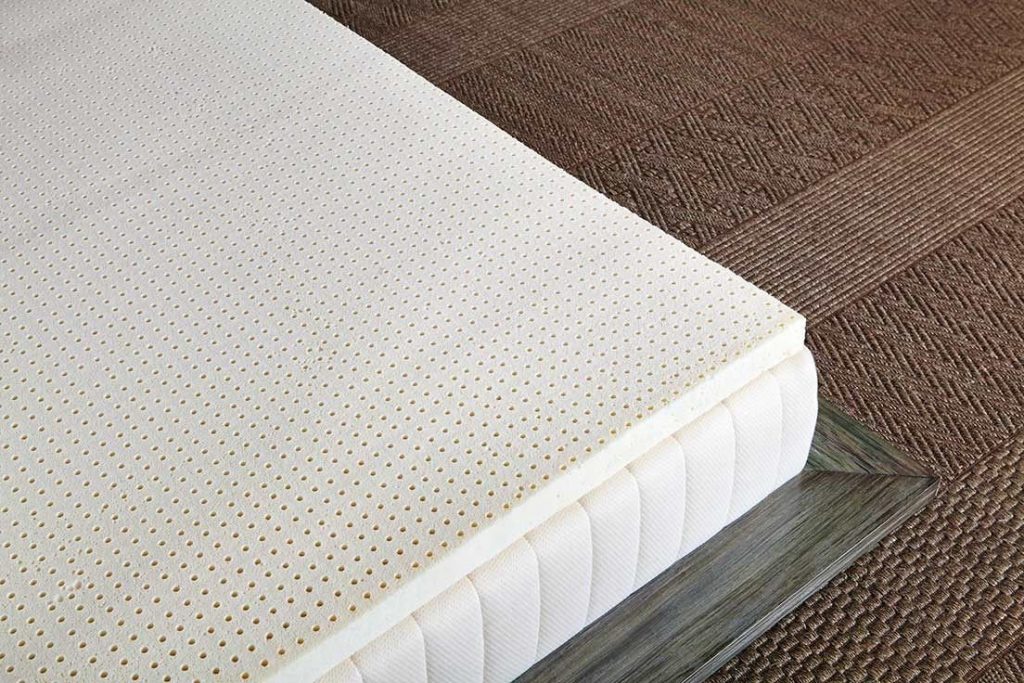
The inflammation of joints and general pain must be addressed properly. This means you need to get advice from a healthcare practitioner, who will first inspect the area, run tests, and then establish a diagnosis.
If the type of arthritis you have isn’t severe or it is in its early stages, most doctors will recommend some mild medication, a healthy diet, weight loss, physical exercise that develops the muscles supporting the joint and rest.
When it comes to the resting phase of your treatment, a high-quality mattress will be of great help. Our recommendation is to make sure to select a surface that doesn’t sleep hot – you need a cool bed to reduce the inflammation, and its best to choose a mattress that is bouncy and supports your every move.
Overall, while a good mattress on its own, won’t be of much help, as part of a complex treatment, it will make a huge difference.
Conclusion
Arthritis is a large health condition, but regardless of type and stage, it should not be ignored! So, if you feel any stiffness or pain in your joints, that shouldn’t be there, make an appointment with your doctor.
The good news is that you can live quite a comfortable life with most types of arthritis. If you suffer from arthritis, get the best mattress for yourself. The secret is to live a healthy life with focus on developing your muscles and keeping the joints healthy and working properly. For this, you will need to keep up with your physical activity schedule and select a good mattress to support your needs.




